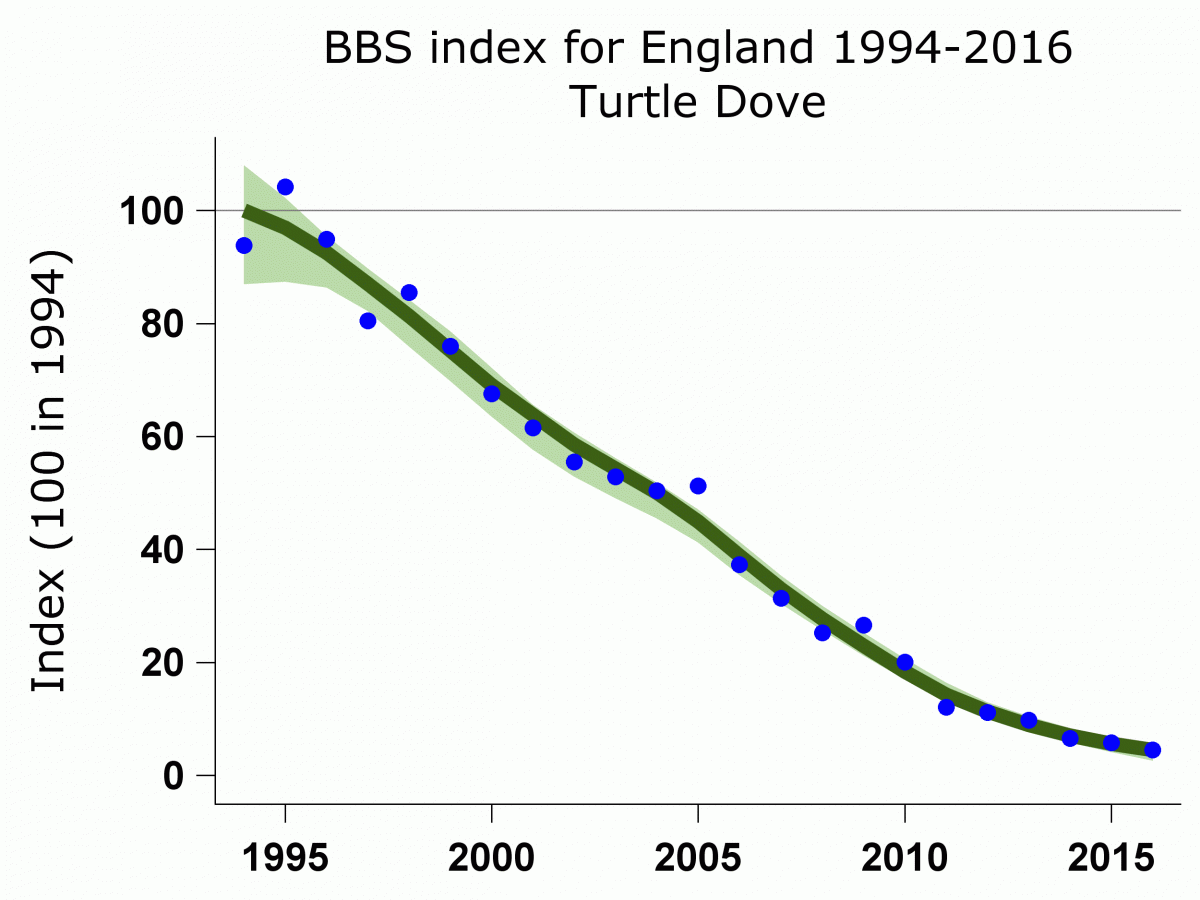We know that turtle doves are in trouble. That is why Operation Turtle Dove work so hard with others to try and reverse the fortunes of this amazing bird. So when a recent scientific paper published in British Birds in September identified turtle doves as “Critically Endangered” in the UK, owing to their strong population declines, it was no surprise, but did act as a reminder to us of the urgency of our work.
There are lots of ways of measuring how well nature is doing – particularly birds, which are one of the groups of wildlife most well studied across the world. In the UK, we have various annual surveys going back decades, and since 1995, we have had the Breeding Bird Survey (BBS), which is carried out every year by volunteers and administered by BTO, JNCC and the RSPB. This particular survey shows a staggering 94% decline in turtle doves in the UK since 1995 – a statistic we often use when talking about the rate of decline of turtle doves.

Of course there are lots of species in trouble, and only limited resources, so conservation organisations need to wade through this kind of information in order to make informed decisions about how we prioritise our work. We need to identify which species are in most dire need of action.
One of the ways we can do this for birds is by using the Birds of Conservation Concern reports which are produced every few years and categorise birds in the UK as red, amber or green. Turtle doves are, unsurprisingly, on the red list. These lists consider a rounded suite of reasons why we might be concerned about a species, for example its population decline, its previous population level, and its international significance.
Across the world, and across multiple different groups of wildlife, a different method is also used, which is the IUCN Red List. This uses lots of information to measure how likely a species is to become extinct at the geographical scale being considered (could be globally, by continent, or nationally). Species are classified as Extinct, Regionally Extinct, Critically Endangered, Endangered, Vulnerable, Near Threatened or Least Concern.
So…back to the recent British Birds article. This new study represents the first formal assessment of the extinction risk of British birds in the UK (as opposed to the extinction risk at a global scale), using the standard IUCN Regional Red-List process. This work showed that 8% of the 234 regularly occurring British birds are “Critically Endangered” at the UK scale – meaning their risk of extinction in the UK is at the very highest level. Turtle doves are included in this 8% – reinforcing what we already know: that we need to act now before we lose this bird from the UK altogether.








